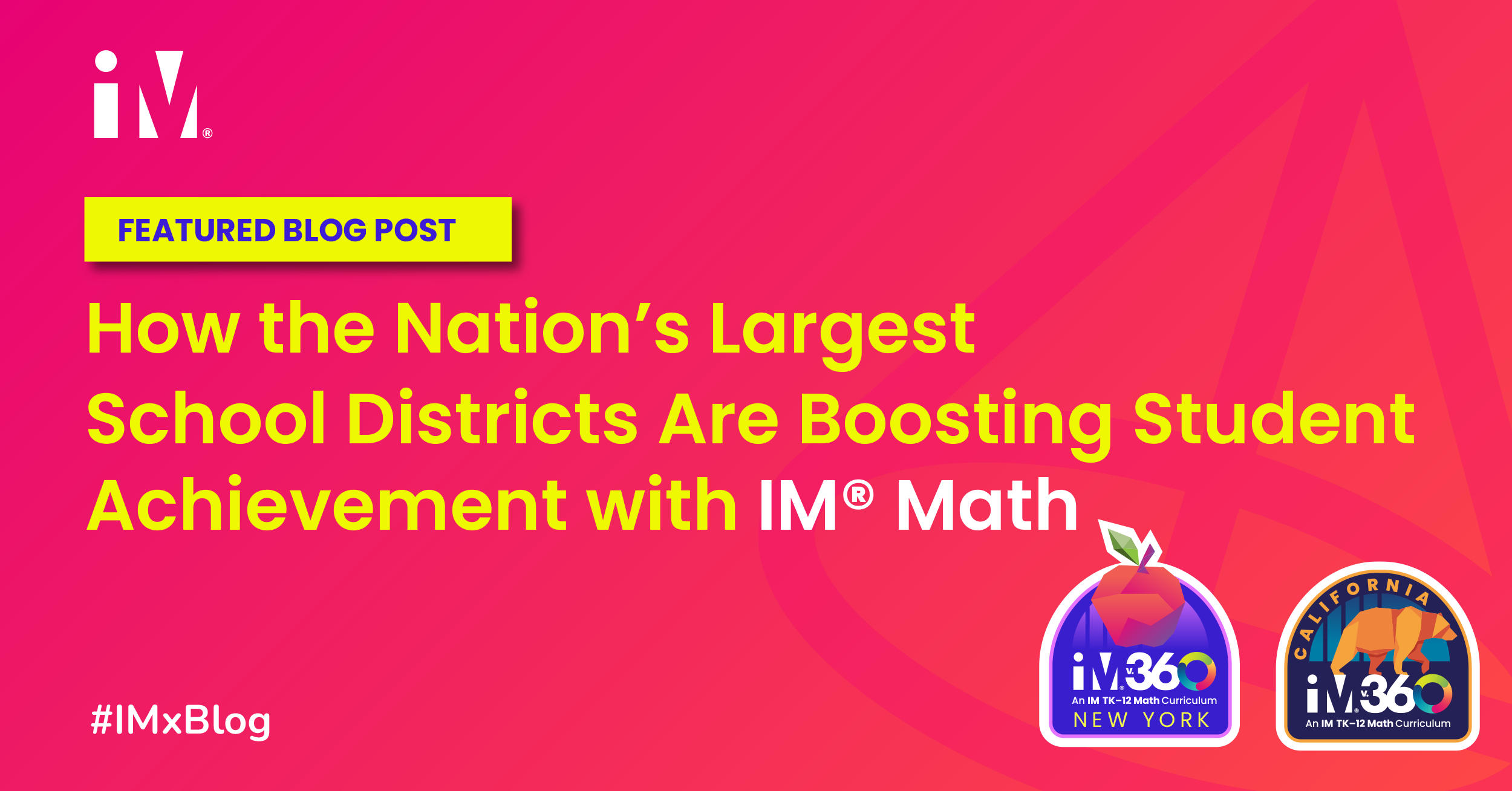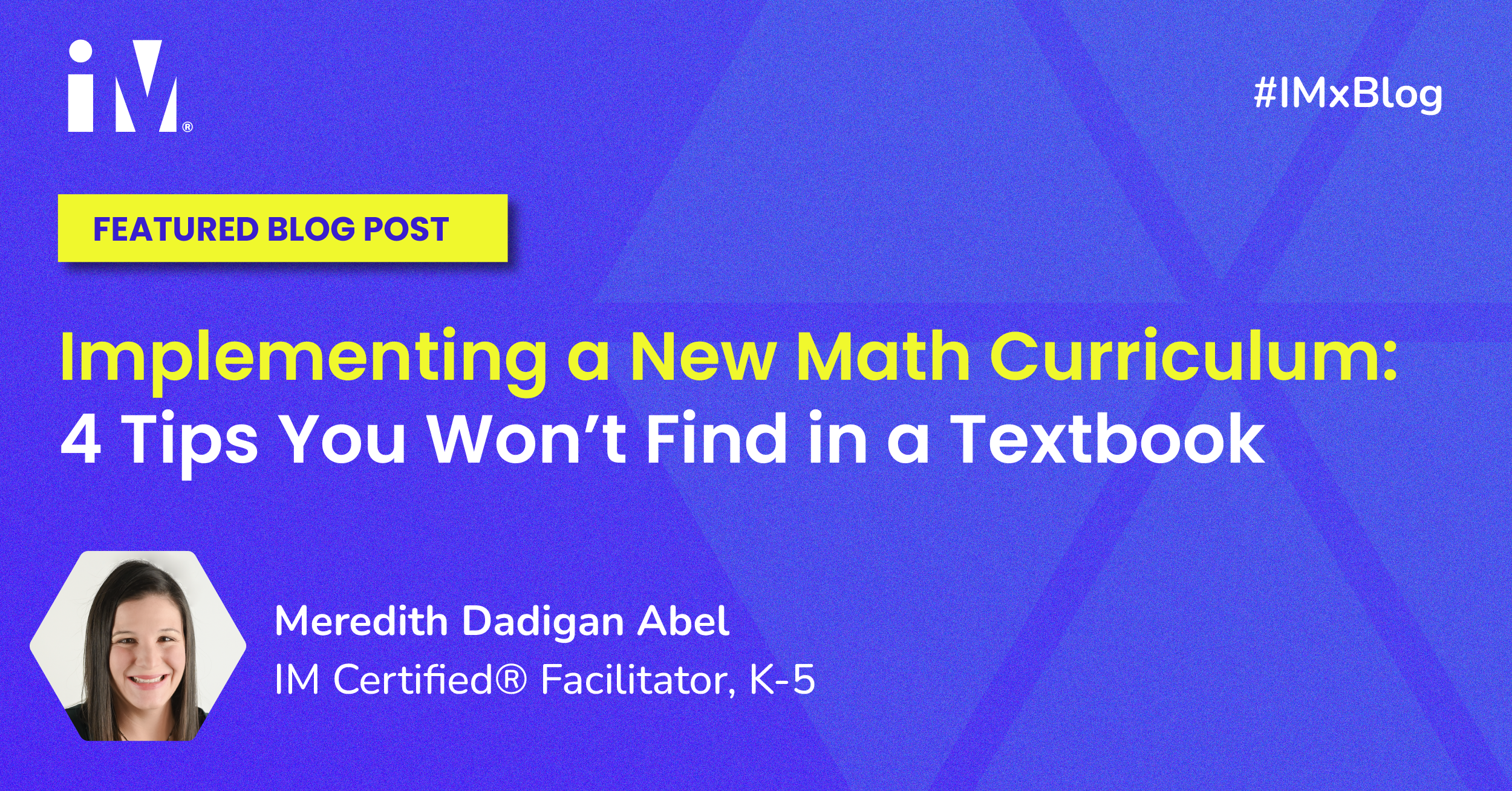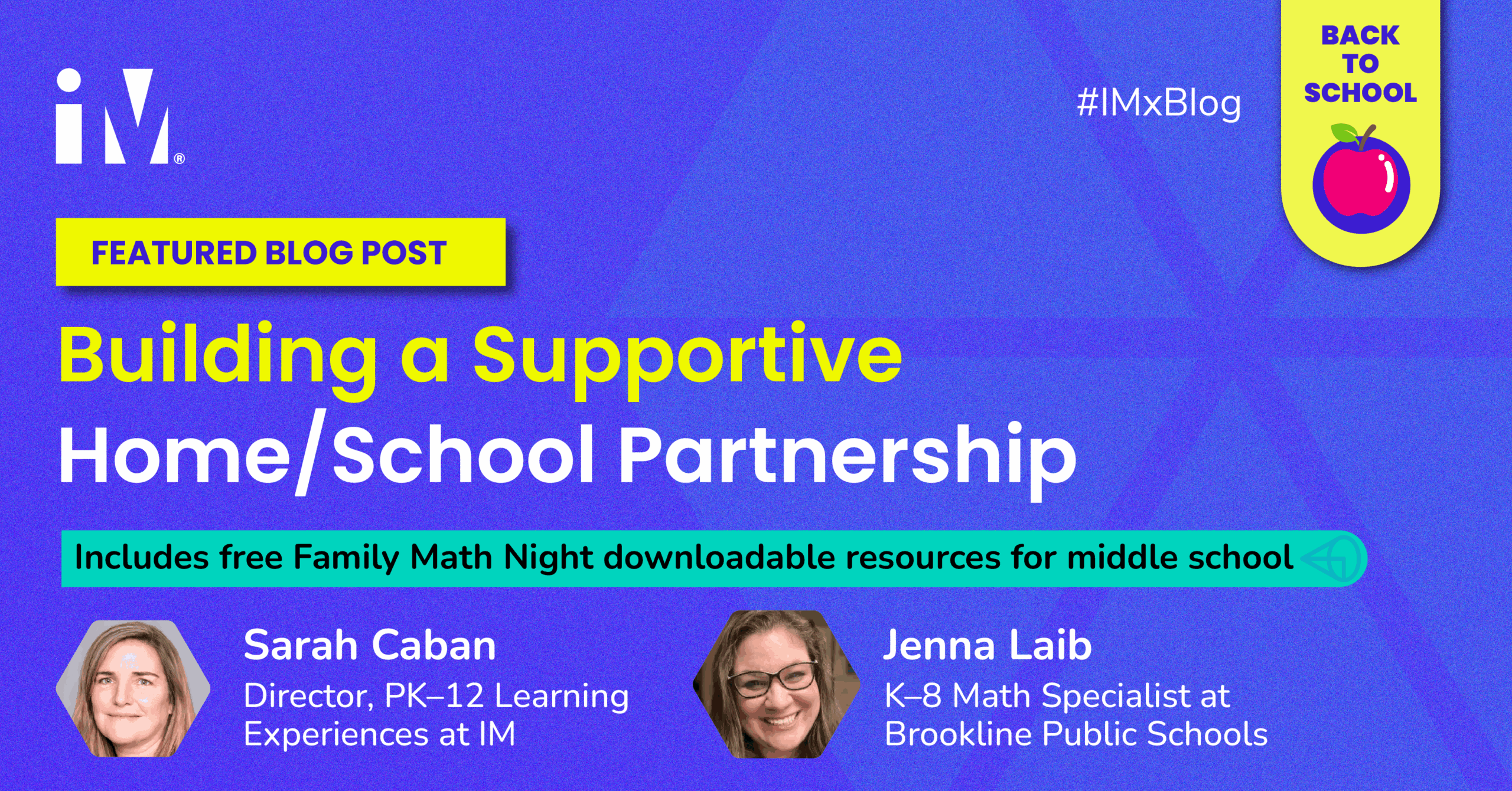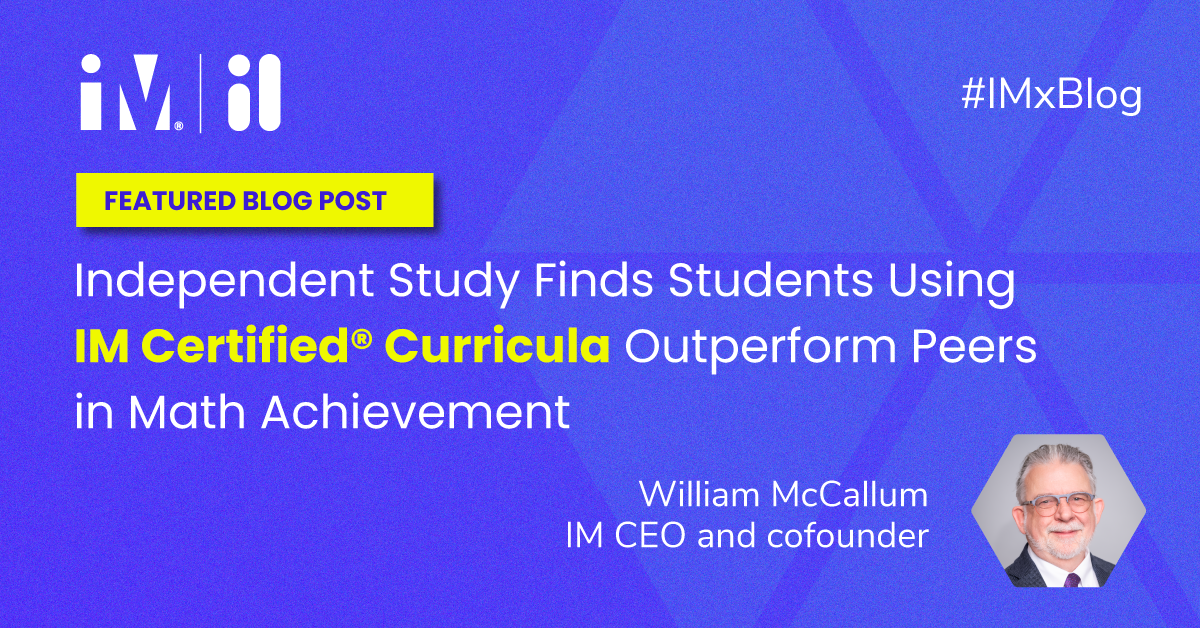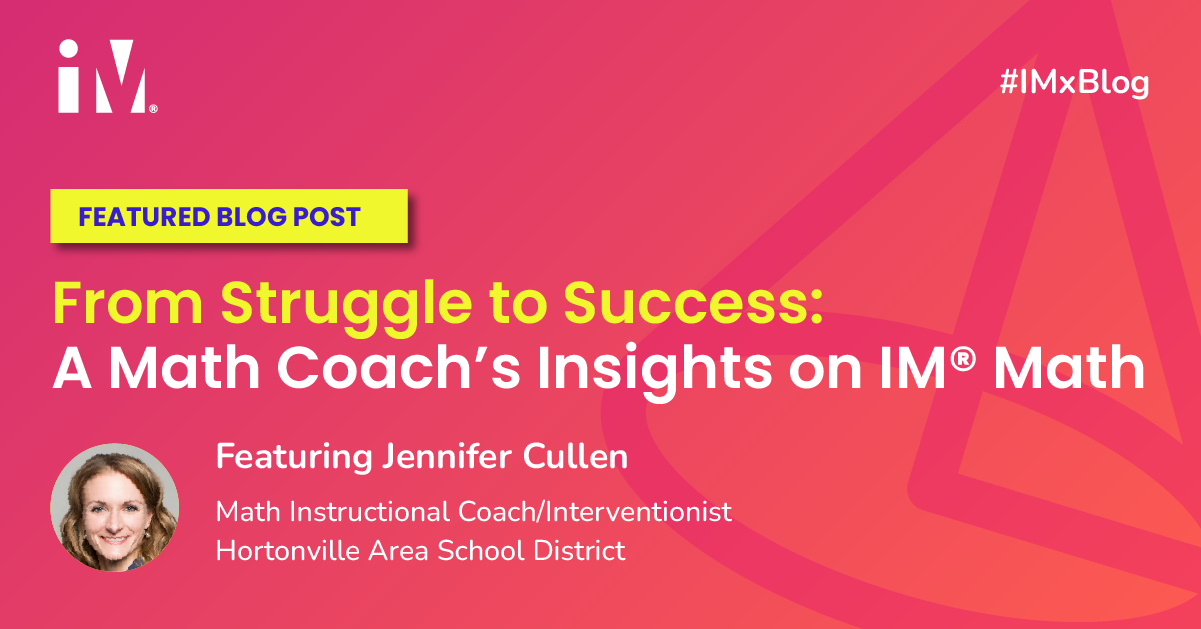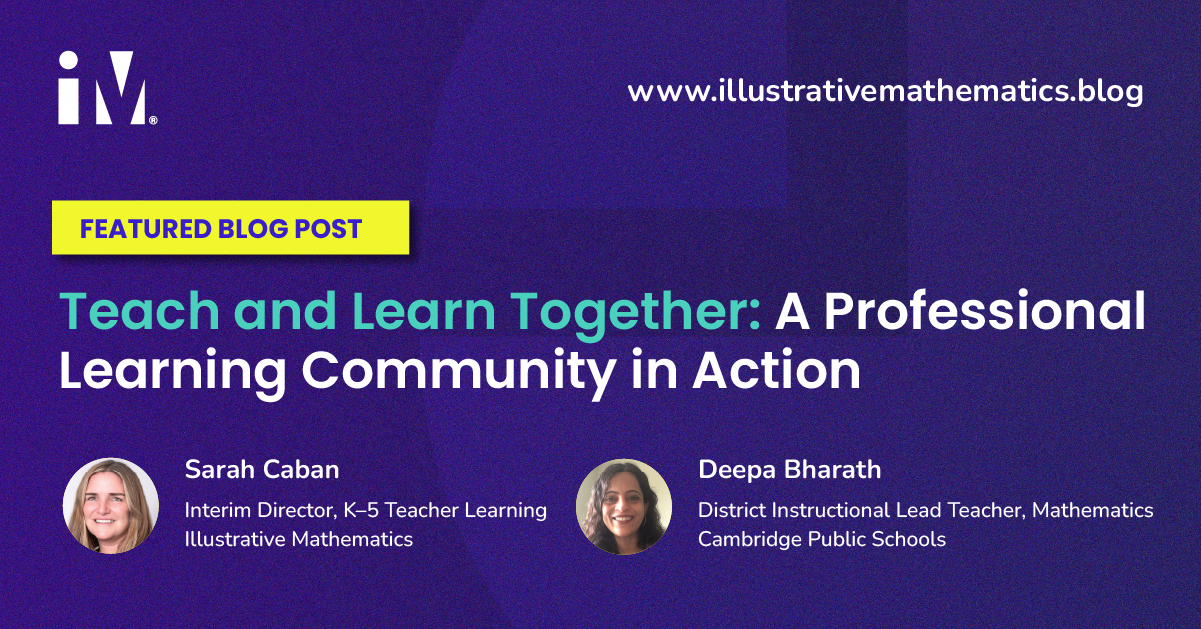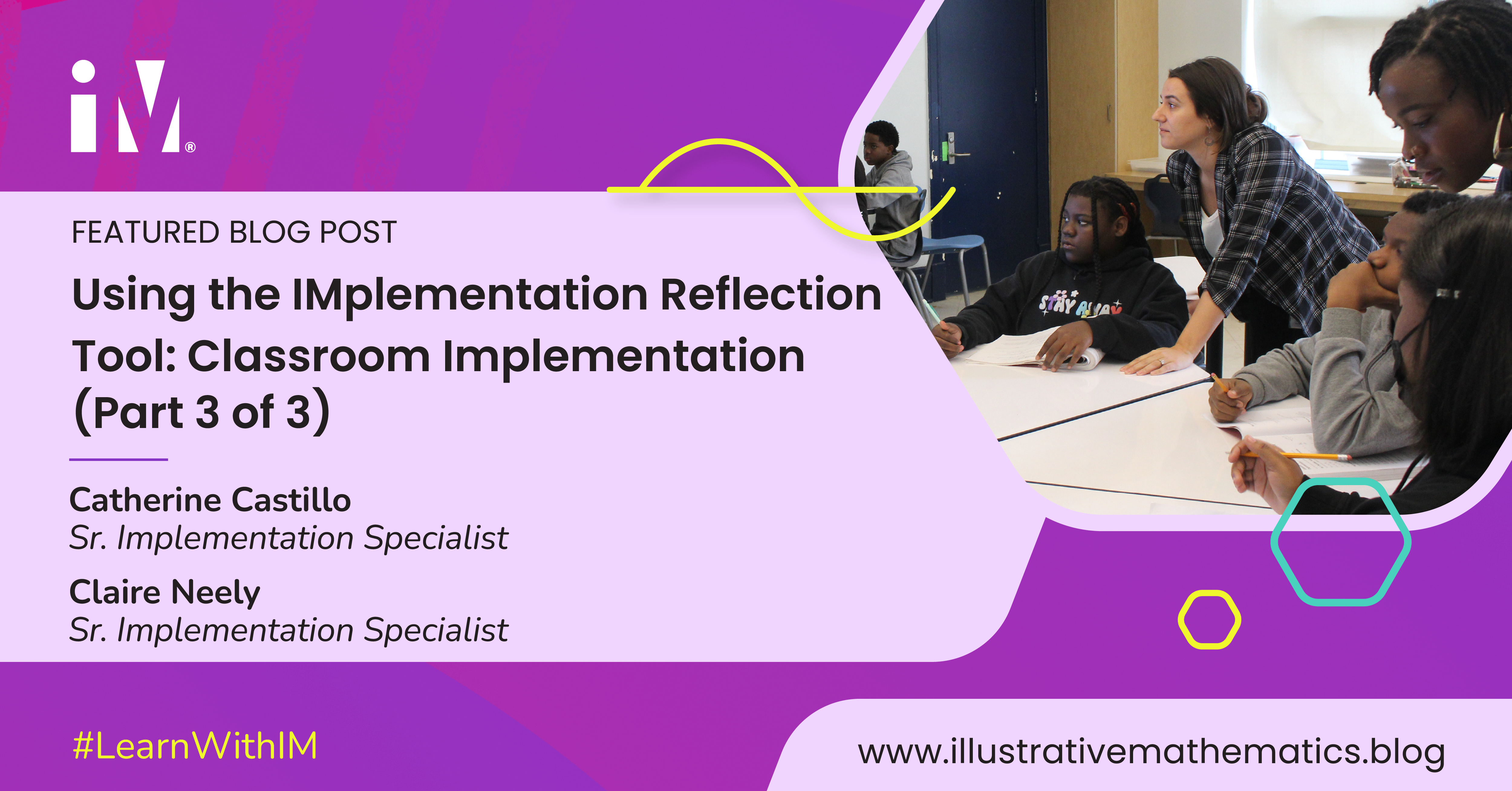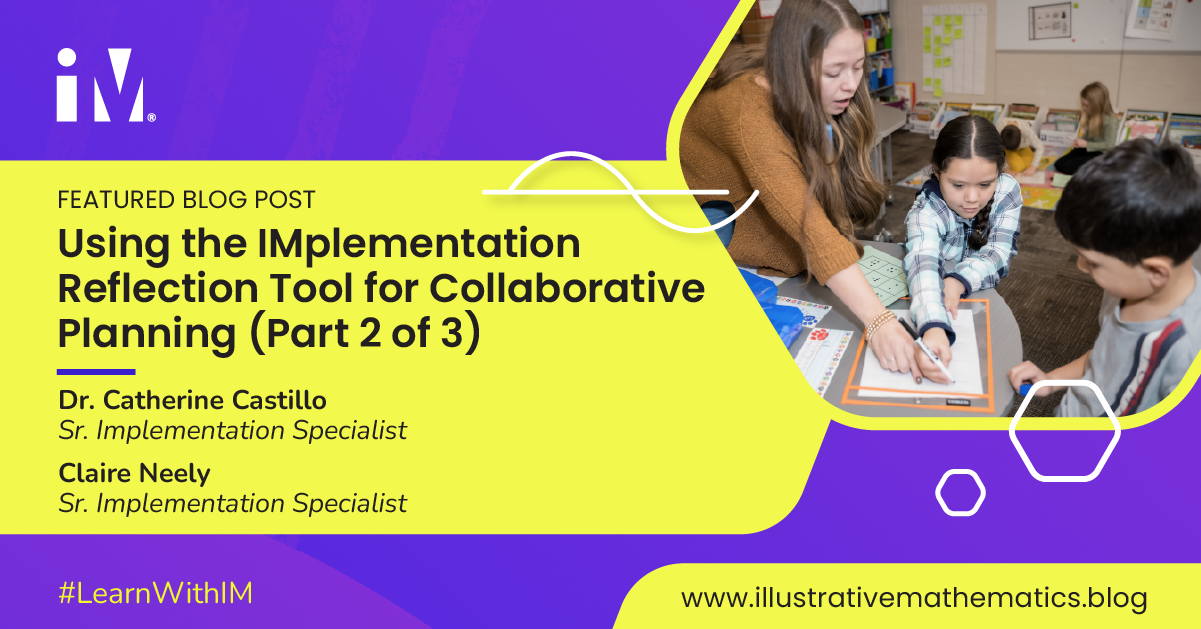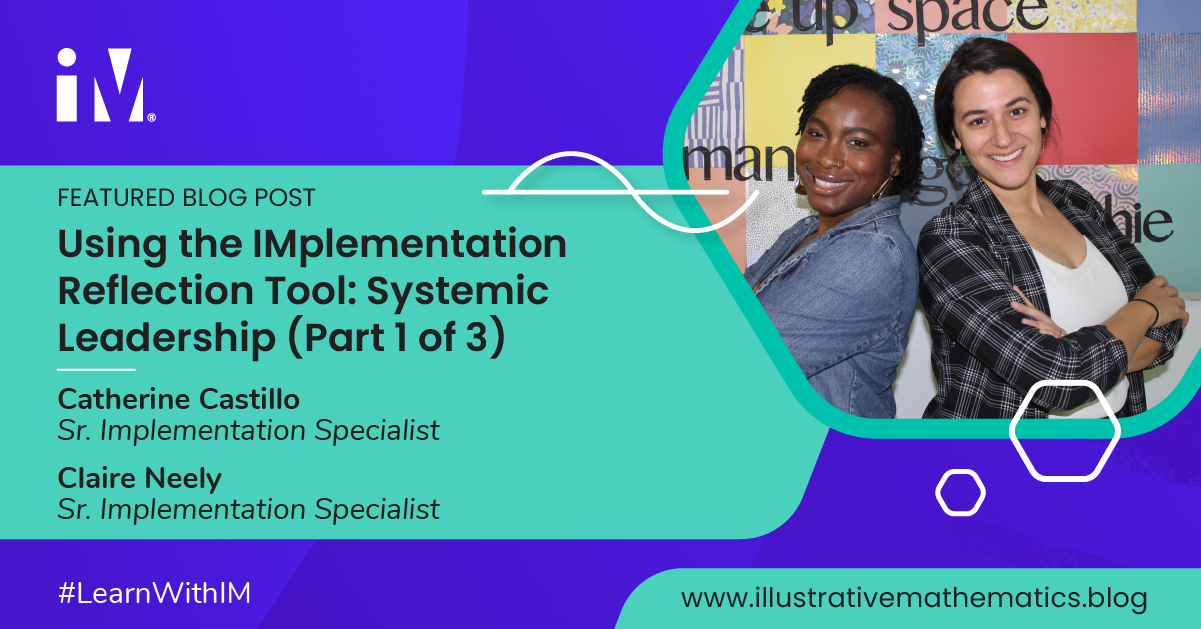IM Certified® Blog
Reenvisioning Classroom Observations
Catherine Castillo, Sr. Specialist, Implementation Enablement Claire Neely, Sr. Specialist, Implementation Enablement “Both rigorous performance evaluation and frequent formative feedback are important building blocks for...
How the Nation’s Largest School Districts Are Boosting Student Achievement with IM® Math
In a recent opinion piece published by the New York Daily News, the leaders of the nation’s two largest school districts celebrate the gains their students have made since adopting IM Math. New York City Public Schools...
Implementing a New Math Curriculum: 4 Tips You Won’t Find in a Textbook
By Meredith Dadigan Abel, IM Certified® Facilitator, K-5 Teachers are the heartbeat of any new math curriculum—they bring lessons to life, adapt to student needs, and make learning happen every day. But behind the scenes,...
Transforming Teacher Beliefs Through a Curriculum-Based MathLab
By Anita Crowder, PhD, Senior Director, Impact Research and Jennifer Wilson, EdD, Senior Director, Implementation Enablement Adopting a problem-based instructional model offers both opportunities and challenges for...
The Role of Revision in Math Class
By Courtney Ortega, IM Certified® Facilitator Learning takes time. Students make connections, deepen their understanding, and address misunderstandings. Along the way, it can make the learner feel vulnerable. “When we...
Building a Math Community with IM K–5 Math
By Tabitha Eutsler, 3rd Grade Teacher “I’m not sure this is working. Only five of my students are participating and commenting each day. The rest sit there and look at me.” This was my conversation with our math coordinator...
Building a Supportive Home/School Partnership for High School
While families arrive with different school experiences and perspectives on what “doing math” means, they often share common questions: “What do I need to know to set my child up for success in math this year?” and “How can...
Building a Supportive Home/School Partnership for Middle School
Open House. Back-to-School Night. Family Welcome. Math Night. No matter what the name of the event that launches the school year, family members will arrive at your school with the same burning questions: “What do I need to...
Turning the Flywheel: The Next Chapter for Illustrative Mathematics
By Kristin Umland, IM CEO and Cofounder Twelve years ago, Illustrative Mathematics® (IM) was just a scrappy startup with very few resources, held together by five founders who shared a conviction that we could help...
Fuel Up for the 2025–2026 School Year
The beginning of a new school year is filled with possibility. Classrooms buzz with energy, students arrive with fresh notebooks and open minds, and educators stand ready to guide and inspire. But as every teacher knows,...
A Farewell and a Look Ahead
By Bill McCallum, IM Cofounder Every parent knows what it feels like to bring a being into existence with the hope they will one day stand on their own. It is one of the greatest joys to watch them grow, change, and...
Celebrating Bill McCallum’s Accomplishments as CEO of Illustrative Mathematics®
Since 2011, Illustrative Mathematics (IM)—which has reached over three million students and educators—has been guided by the vision, expertise, and heart of our CEO and cofounder, Bill McCallum. Today, we are announcing a...
Research Study Finds Students Using IM Certified® Curricula Outperform Peers in Math Achievement
By William McCallum, IM CEO and cofounder At Illustrative Mathematics® (IM), we believe learning mathematics is a lot like learning to ride a bike. You don’t learn by watching someone else do it—you learn by getting on the...
Unlocking the ‘Our’ in Discourse
Catherine Castillo, Sr. Implementation Specialist Brea Jimenez, Sr. Specialist, Facilitator Certification and Quality Assurance What do you notice about this NCTM framework for mathematics teaching? What do you wonder? You...
Student Voice: The Signal, Not the Noise
By Anita Crowder, PhD, Senior Director of Impact Research An ideal Illustrative Mathematics (IM) classroom is one where students’ curiosity drives learning, their feedback shapes instruction, and their identities are...
From Struggle to Success: A Math Coach’s Insights on IM® Math
Jennifer Cullen, Math Instructional Coach/Interventionist, Hortonville Area School District How do you transform math instruction to reach every student—from those who struggle to those who soar? We recently sat down with...
Teach and Learn Together: A Professional Learning Community in Action
Deepa Bharath, District Instructional Lead Teacher, Mathematics at Cambridge Public Schools Sarah Caban, Interim Director, K–5 Teacher Learning at Illustrative Mathematics “Illustrative Mathematics is a problem-based...
Using the IMplementation Reflection Tool: Classroom Implementation (Part 3 of 3)
Catherine Castillo, Sr. Implementation Specialist Claire Neely, Sr. Implementation Specialist "...[I]nstructional capacity for producing meaningful student learning is a function of the interactions among teachers’...
Using the IMplementation Reflection Tool for Collaborative Planning (Part 2 of 3)
Catherine Castillo, Sr. Implementation Specialist Claire Neely, Sr. Implementation Specialist “When teachers reflect on their students’ learning and their practice together, it can demonstrate that teaching challenges are...
Empowering All Storytellers: Tips for Engaging Special Populations Using IM® v.360 for Grade 6-12
Tina Cardone, Specialist, 9-12 Content Brea Jimenez, Sr. Specialist, Facilitator Certification and Quality Assurance Note: This blog post is intended to inspire creative solutions to the challenges teachers of special...
Using the IMplementation Reflection Tool: Systemic Leadership (Part 1 of 3)
Catherine Castillo, Sr. Implementation Specialist Claire Neely, Sr. Implementation Specialist “Given the critical role that school leaders play in supporting the development of coherent instructional systems at the school...
Maximizing the M in STEAM
Anita Crowder, PhD, Senior Director of Impact Research Kathleen Whittle, Cofounder Teachineers “The only way to learn mathematics is to do mathematics.” – Paul R. Halmos STEAM (science, technology, engineering, art, and...
NCTM and NCSM: A Video Interview With Bill McCallum
By Bill McCallum, IM CEO and cofounder As CEO and cofounder of Illustrative Mathematics, Bill McCallum shares his reflections from the 56th Annual NCSM Conference and NCTM’s 2024 Annual Meeting & Exposition in Chicago,...
Think Pair Share
Jennifer Wilson, Senior Director, Implementation Portfolio When teachers are curious about and trust student thinking to drive learning, they create classrooms where students learn mathematics by making sense of problems,...

